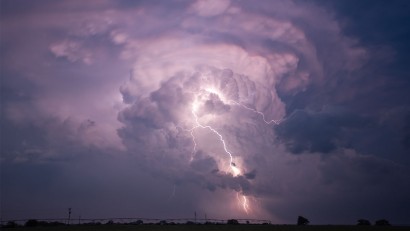- 1. Desert-friendly hiking fabrics
- 1.1. Cotton
- 1.2. Polyester
- 1.3. Merino Wool
- 2. What clothes to wear for desert hiking?
- 2.1. Grab a pair of convertible pants
- 2.2. Pair them with a breathable shirt
- 2.3. Put on a lightweight jacket
- 2.4. And UPF hat’s off to you!
- 2.5. Optional: Base Layer
- 2.6. Closing thoughts
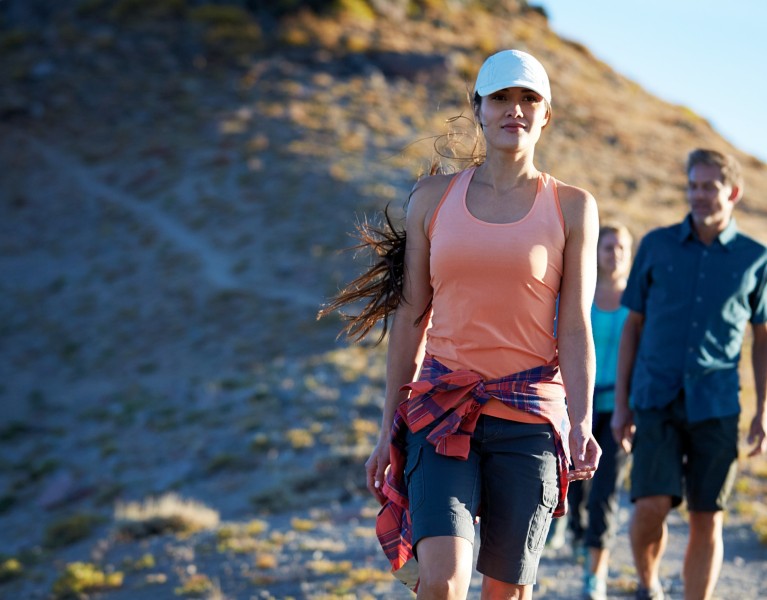
4 Clothing Essentials Needed for Desert Hiking
Table of Contents [Show]
If you are following any outdoor blog, every now and then you can find and read stories with titles like - "Park visitors rescued after hiking unprepared," "Hiker rescued in the desert..."
But what makes desert hiking so unpredictable?
Short answer - a wide range of weather conditions. Naturally, hikers prepare for the exhausting heat waves, but not for the guaranteed nighttime lows, strong winds, or dangerous storms and flash floods.
According to Zion National Park Lodge, day/night temperatures in one of our most visited national parks can differ by more than 30 ºF - depending on the season and elevation.
So, how should I dress for a desert hike if temperatures are unpredictable? Well, tie your shoelaces and put that sun protective hat on, and let’s start with...
Desert-friendly hiking fabrics
Hiking in desert conditions is rough business if you are not prepared.
High temperatures and low humidity often evaporate your body's natural cooling system, almost negating its effect, and the unwelcoming terrain can quickly wear out soft fabrics, leaving you exposed to all kinds of dangers.
And that's where fabrics you wear come into play.
Cotton
There’s a lot of discussion in the outdoor community when it comes to cotton. Some hikers oppose wearing cotton shirts due to the material’s hydrophilic nature. It leaves you feeling sweaty during the day, and cold during the night.
On the other end of the discussion, outdoor enthusiasts recommend the fabric for the exact same reason - the moisture keeps you cool in the day’s heat, so wearing wicking materials is a no-no.
In the end, it all comes down to your hiking location, its climate, time of day, and whether or not you have a replacement shirt for when it gets cold.
Polyester
It is no secret that hikers often advocate wearing polyester clothes because it is excellent at wicking moisture; a perfect feature to have when the afternoon chill comes in.
Not only that, but the fabric also has other useful desert hiking characteristics, such as:
- Water-resistant - helps during the storms
- Insulating and quick-drying - keeps the heat during the chilly afternoon
- Durable and abrasion-resistant - perfect counter to rough terrain
- Easy to wash and dry
However, polyester absorbs oil and not water, and the downside is - body odors are oil based, which is why people often avoid using the fabric extensively.
Merino Wool
Before you start feeling itchy just from reading the headline, let me tell you that merino wool (unlike other) fibers are much smaller in diameter and more flexible - which makes the fabric super comfortable.
But what makes the material suitable for desert hiking?
It is said that Beduin people of the Sinai Peninsula desert used merino wool to keep themselves cool during the hot days and to stay warm during the cold nights.
Merino wool has unusual desert-friendly characteristics:
- Helps to regulate the body temperature - the fabric crimps and traps dead air that keeps you warm, and it stores moisture which cools you down when it evaporates.
- Odor-resistant
- Regulates moisture - wicks and dries quickly
- Resilient and stretchy
- Eco-friendly and sustainable!
Check out our “About Merino Wool Outdoor Clothing” article if you are interested in reading more about the fabric.
Now that we covered the fabrics let’s talk about...
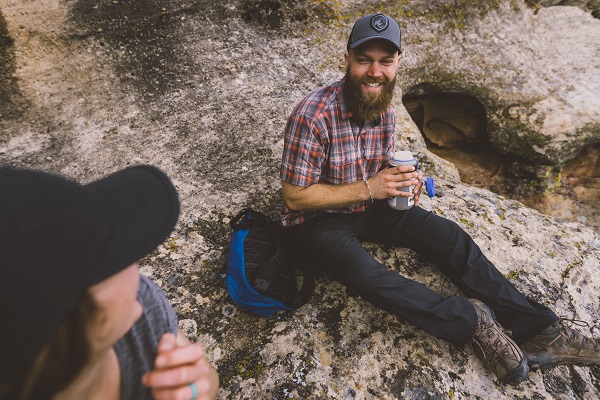
What clothes to wear for desert hiking?
Buying good-quality desert hiking outfits for summer is as important as staying hydrated. Browse through your closet (or an online shop) and look for:
- Lightweight layers - heavy layers contribute to dehydration
- Breathable fabrics and features (mesh panels and vents)
- Long sleeves and loose fitting pants - they protect your skin from the UV rays, bugs and thorny shrubs
- Clothes with light colors - avoid camo colors. If things go south for whatever reason, you want to be noticed at a glance.
- Sun protection labels on hats, pants, and shirts - the higher the UPF, the better
All these features combined provide the ultimate desert hiking protection. With Kühl's innovative technology, the features can be found in their lightweight performance wear. Consider the following four:
Grab a pair of convertible pants
There is absolutely no better way to prepare for both the daily highs and nighttime lows in the desert than with convertible pants. What makes these type of pants the best for desert hiking is its versatility - the ability to zip them off during the day and wear them as shorts.
KÜHL’s Renegade™ Cargo Convertible pants do it with such ease thanks to the patented STEALTH™ zip-off system which removes the fabric flap to make effortless to take off the bottom half, and put it back on when it's needed.
But that’s not the only thing which makes the pant so suitable for warm weather hiking. When the sun is high, they keep the ultraviolet skin damage at low - thanks to the UPF 50 sun protection.
Renegade™ Cargo Convertible has a breathable soft shell fabric with a built-in anti-abrasion property which is excellent for handling the desert sand that might be stirred up from possible high winds.
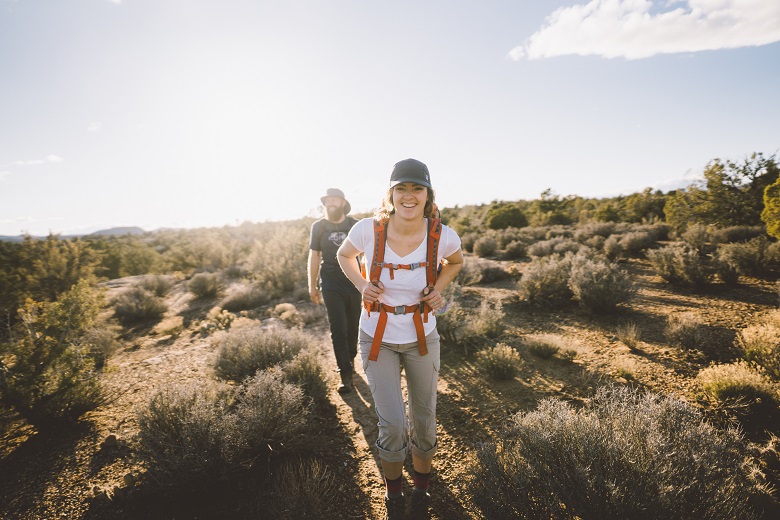
Pair them with a breathable shirt
Again, the word of the day is versatility, so look for men's lightweight shirts that can be transformed to both long and short sleeves.
The Airspeed™ LS can be rolled up and buttoned with secure straps and has strategically placed mesh panels on the side body for cooling comfort in the area that holds in the most heat.
But that’s not all - you also have UPF 30 protection and it comes coupled with a built-in sunglass cleaner on the bottom. With the desert sands, you definitely are going to be using this for your sunglasses quite frequently on your hike.
Put on a lightweight jacket
To be prepared for potential storms and low temperatures that come in the evenings, you should look to bring a lightweight jacket - one that is easy enough to carry around during the hotter times of the day.
The Transcendr™ Hoody rain jacket provides you with this comfort and ticks all the desert hiking boxes.
It is breathable, light as a feather, and provides the protection needed for possible higher winds you might experience in the desert with the help of cord adjustments. These are found both on the bottom and behind the hood to minimize the bulk.
Also, the men’s desert jacket has reflective trims - the desert is an extremely dark place because of the minimal urbanization there, so wearing a reflective jacket can be helpful.
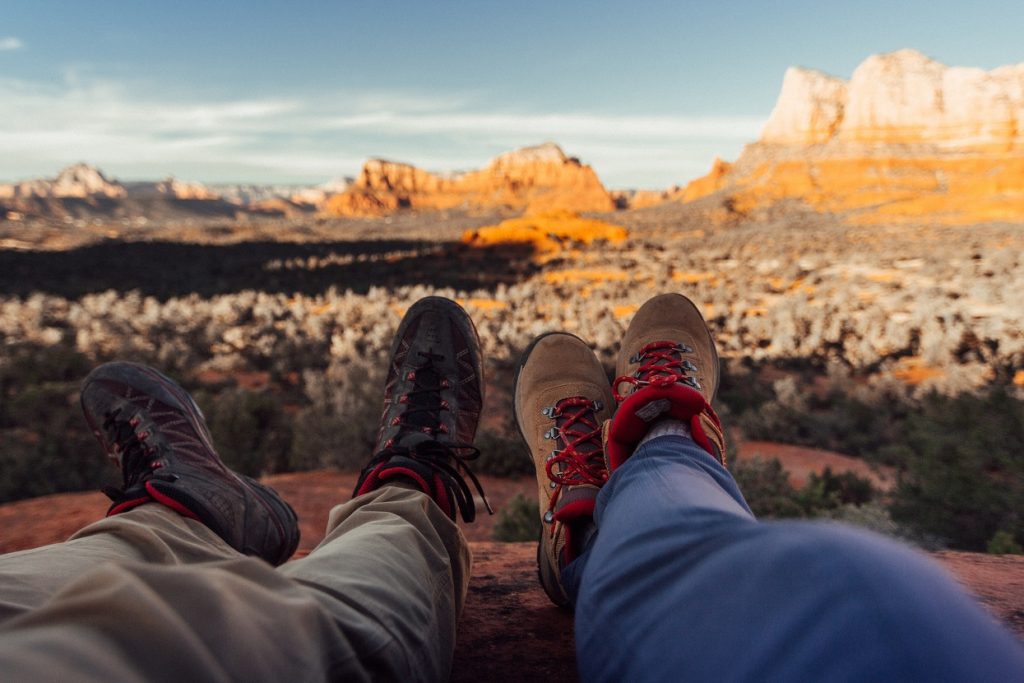
And UPF hat’s off to you!
Apart from wearing sunglasses and lip balm during those desert highs, you don't want to be without the protection a wide-brimmed hat can provide.
The Sun Blade™ combines this shaded protection with innovative technology that keeps your head and neck cool and protected from the sun. It's created to keep fabric off your skin combined with UPF 50 protection.
This efficient desert hat also has a 2-way design so you have the protection you need when you need it. You can have the shorter brim or the broad brim forward to shielded you even more from the sun and reduce glare for any moments of relaxation.
Optional: Base Layer
If you are staying late, consider packing a merino wool base layer bottom and/or top. The fabric's wicking characteristic will help regulate your body temperature during the chilly evenings, and the fibers feel comfortable next to the skin.
Closing thoughts
Desert hiking is much more unpredictable than one might think. Be prepared with desert hiking clothing & gear to protect your body while still being comfortable and lightweight. This is one of the key steps to achieve the enriching experience desert hiking has to offer.
For more info, check out our guide on what to bring on a hike.


